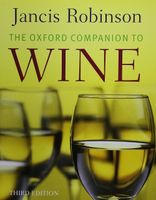🔥 Try our grilling cookbooks and save 25% on ckbk membership with code BBQ25 🔥
How to taste: Eye
Published 2006
The job of the eye in wine tasting is mainly to assess clarity and colour, as well as to monitor the presence of carbon dioxide and alcohol (the former indicated by bubbles, the latter possibly by any tears of the wine that may form on the inside of the glass when it is rotated).
The clarity of a wine is an indication, hardly surprisingly, of the extent to which clarification has been carried out, but also of the wine’s condition. Many wine faults result in a haze of some sort. In the late 1990s, anti-filtration sentiment was so strong in California that some highly priced Chardonnays looked positively cloudy, a common characteristic in many natural wines. A wine with particles floating in it, however, may simply be an innocent casualty of poor serving technique in which a wine has not been properly separated from its entirely harmless sediment. Experienced tasters can sometimes discern quality simply by looking at a wine’s luminescent clarity and subtle range of hues.
Become a Premium Member to access this page
Unlimited, ad-free access to hundreds of the world’s best cookbooks
Over 160,000 recipes with thousands more added every month
Recommended by leading chefs and food writers
Powerful search filters to match your tastes
Create collections and add reviews or private notes to any recipe
Swipe to browse each cookbook from cover-to-cover
Manage your subscription via the My Membership page
Part of
Advertisement
Related Recipes
-
-
-
-
Related Reference
-
-
-
-
Advertisement



